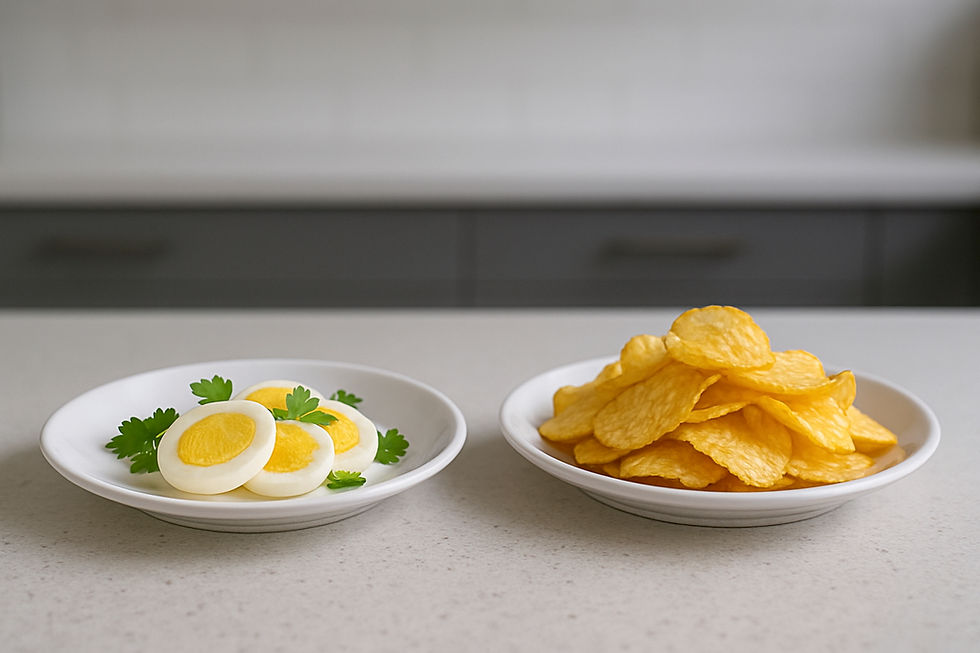Conquering Canine Care Chaos: Navigating Surgery Stress with Strider the Goldendoodle
- jason99155
- Feb 14
- 4 min read
Updated: Jun 9
Sharing your life with a pet creates bonds filled with love and joy. This becomes very clear when your pet requires medical attention. The demands put on us when a pet is ill are quite different than when it's a human companion.
I experienced this deeply when my 9-year-old Goldendoodle, Strider, faced the unexpected challenge of surgery to remove two skin growths, one on the back of his neck and one on his belly. Not to worry, both growths turned out to be benign.
Strider is a very likable dog. Being part poodle, he's not that interested in playing fetch. Being part golden retriever, he's not terribly smart. He's friendly and not overbearing, and craves a relatively small amount of attention. He loves to bark to inform us when there's a visitor. He loves playing with other dogs, as long as he is off-leash. He loves mouthy play, but mainly only does it with me. Being 9 years old, he's about the same as he was since we got him, just with less stamina.
The folks at the animal medical center (and where he gets groomed) always tell me how much they like him, and I think there's something about his patience that they appreciate. Or maybe they tell this to all of us dog owners...
Understanding the Surgery Experience
Part of the stress of animal care is managing with the unknown. When the growths on Strider's skin were found, he was unable to explain how long they had been there. The one on his neck was hidden by his dog collar. The time spent waiting for test results can be a trigger for worry and negative thoughts. Approaches to managing with these ambiguities can include thought stopping, mindfulness exercises, and engaging in activities that require your attention.
Facts and information can help to reduce stress and worry. Before Strider’s surgery, it was important to get information about the procedure and what would come next. Besides asking questions at the animal medical center, you might find that going to Reddit and other websites can help you as well. However, the animal medical center proved to be the most specific when it came to Strider. A great animal medical center leans in to make sure that you know what to expect.
Although the animal medical center did an excellent job explaining how Strider might look after the surgery, it still takes getting used to seeing your dog in those moments. You'll notice changes in movement and energy. At one point, Strider decided to have a sit in the animal medical center driveway. After what seemed like a minute, he proceeded to start walking again.
The Good, the Bad, and the Cone of Shame
When Strider returned home, the sight of him wearing the "cone of shame" was absurd. ...and by the way, the technical term for the cone is an Elizabethan Collar. He was very groggy. He was not able to figure out that the cone impeded his movement, so he tended to bump it going around corners.
He also wasn't able to tell us beforehand that his stitches would hurt if we held him the wrong way. He gave out a yelp the first time he was lifted, and that's how we learned this was the case.

Strider also had a large wound from the biopsy, visible on the back of his neck. After a day or two, we discovered he liked being gently scratched on the spot.
Stress Management
Strider's post-surgery routine involved keeping him calm, administering medications on schedule, and giving him plenty of love and comfort. Luckily, a little piece of prosciutto did the trick for his meds.
Managing the stress as a caregiver is essential. Here are strategies that you may find helpful:
Preparation is Key: Know what to expect before surgery. Gather soft bedding, favorite toys, and vet-approved treats to celebrate your dog's bravery.
Create a Calm Environment: Keep the lights dim and noise levels low. This peaceful setting allows your dog to relax.
Laugh It Off: Humor can become a refuge. Watching your dog lumber around with a cone might lift your spirits, even during stressful times.
Don’t Forget Yourself: A stressed caregiver can’t provide the best care. Take small breaks, indulge in a coffee, and practice self-care. A happy caregiver means a happier dog!
Ask for Help: It's okay to reach out for support. Friends and family, even online communities, offer advice and encouragement, revealing that many have faced similar challenges.
Recovery: The Goldendoodle Way
In the days following surgery, Strider’s recovery was impressive. His energy level picked up within days, and soon he was able to take off his cone of shame.
Dogs seem to have a remarkable ability to bounce back. Their resilience and penchant for play made the recovery process easier. While some people may tend to dwell on discomfort, dogs seem to view challenges as an excuse for a nap and a little pampering.
The Journey Forward
Ultimately, navigating Strider’s surgery and recovery was a heartfelt journey.
If you find yourself in a similar situation, remember to breathe, embrace the silliness, and learn from your furry friend. You can also learn about my approach to managing pet-related stress here.
Here's to many more joyful adventures with Strider!



Comments